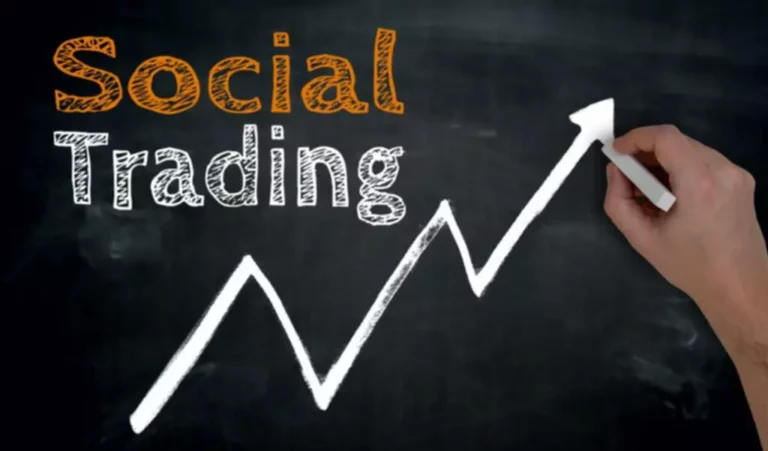Volumes
A sudden shift in the volume may suggest traders think a stock is either over or undervalued and are rushing to buy or sell the stock. The hourly trading figures are an estimate, whereas the daily figures are more accurate. Created by Joseph Granville in 1963, OBV is an accumulation-distribution indicator. https://www.xcritical.in/ It is a cumulative indicator of buying and selling pressures and reflects the crowd sentiment. When the stock closes higher than the previous close, then all of the day’s volume is considered up-volume. Large-cap stocks have high liquidity—they are well followed and heavily transacted.
- Conversely, to confirm a break in the level of resistance, they look for high volume from buyers.
- Recently, high-frequency traders (HFT) and index funds have become major contributors to trading volume statistics in U.S. markets.
- On the initial breakout from the range or chart pattern, a rise in the volume indicates strength in the move.
- In the chart above, you can see that volumes are represented by blue bars (at the bottom of the chart).
- From an auction perspective, when buyers and sellers become particularly active at a specific price, it means there is a high volume.
The EUR/AUD chart below highlights a phase of consolidation set within an uptrend at the beginning of 2018. The expectation would be for a bullish breakout before long, yet we do not know when that might occur. The consolidation seen throughout January 2018 started with a decline in price and volumes. Consider the forex market, a trillion dollar a day exchange that involves transactions across a host of platforms. The decentralised nature of the FX market makes it more difficult to quantify. It is also worthwhile noting that volume will often reflect peaks and troughs in trading activity according to the time of the day.
High volumes can indicate bullish or bearish sentiments and the level of investor conviction regarding a particular stock. Trading volume or just volume represents the amount of a security that was traded during a time period in the markets. In the context of one stock trading on a stock exchange, the trade volume is often stated as the number of shares that were traded during one day. The on-balance volume indicator, commonly referred to as OBV, is used to find stocks that have been experiencing sharp increases in volume without a significant change to stock price. When institutional investors start buying shares, one of the goals is to refrain from pushing the price higher so that they can keep their average entry price as low as possible.
Notice how the OBV indicator was trending sharply higher during this period. The increasing OBV suggests that traders were becoming bullish on the stock, and a stock screen for rising OBV values would have allowed active traders to get in early before the rise to $41.11. Good trading volume for a security is hard to define because trading volume’s value comes into play when looked at in context with other indicators, such as price direction and volatility. how to increase your brokerage trading volume Any level of volume that provides investors with specific insight into a security’s price action (and a sense of the trading interest in that security) can be thought of as a good trading volume. Trading volume can also signal when an investor should take profits and sell a security due to low activity. If there is no relationship between the trading volume and the price of a security, this signals weakness in the current trend and a possible reversal.
This indicator can also divergences like when the prices rise and volume is increasing at a lower rate or falling. As discussed above volume is used by technical analysts to confirm trends and chart patterns. When the volume decreases and prices are also falling then it generates a bullish signal and similarly when the volume decreases when the prices are rising then it indicates bearish signals.
Daily volume is the most common time frame used when discussing stock volume. Average daily trading volume is the daily volume of shares traded, averaged over a number of days; this smooths out days when trading volume is unusually low or high. Volume is the number of shares of a stock that have changed hands over a certain period of time, typically one day. Stocks with higher volumes have more investors interested in buying or selling them.
For example, economic growth indirectly contributes to earnings growth. Recently, high-frequency traders (HFT) and index funds have become major contributors to trading volume statistics in U.S. markets. Many trades are conducted by high-frequency algorithmic traders, which are automated trading platforms programmed to make trades. By 2030, algorithmic trading is expected to gain a market size of $41.9 billion. In general, it is best to align a strong surge in volume with a strong shift in the company’s fundamentals. In the case of Delta, the addition to the S&P 500 suggested that large index funds and mutual funds would be adding positions.

The countertrend volume shifts that preceded that breakdown also added to the feeling of a potential shift for the index. This ability to see participation on a breakout heightens the value of such a move, bringing a greater degree of confidence that the reversal will have legs rather than produce a fake-out or false signal. Market sentiment refers to the psychology of market participants, individually and collectively. And you can sometimes wait a long time in the hope that other investors will notice the fundamentals. Company stocks tend to track with the market and with their sector or industry peers.
If the stock goes down with little then it also means the same thing. Volume may not be an attractive piece of information but you should try to combine the volume data with resistance and support levels to get a clear picture. Finder.com is an independent comparison platform and information service that aims to provide you with the tools you need to make better decisions.

The on-balance volume (OBV), money flow, and rate of change are some of the frequently used volume metrics. Another form of market analysis that can be enhanced via the use of volume data is through pattern confirmation. Reversal patterns can provide a trader with a potential trading opportunity that goes against the trend. However, such countertrend trading that can have innate risk, thus raising the value of a confirmation tool. Volume can provide that tool, with high volumes on a pattern completion adding greater confidence in that move. One of the most difficult elements for traders seeking to utilise volume as part of their trading strategy is the question over whether the data being provided by their broker is reliable.
When volumes increase during a price rise, yet fall during a price drop, that is bullish. Conversely, if volumes increase during down moves, yet decrease during upward price moves, this would be a bearish signal. The average volume of a security over a longer period of time is the total amount traded in that period, divided by the length of the period.

Going by the assumption that smart money always makes smart choices, the expectation turns bullish, and hence one should look at buying opportunity in the stock. New orders in the construction industry Dataset | Released 11 August 2023 Quarterly new orders at current price and chained volume measures, seasonally adjusted by public and private sector. Extending trading hours will be more useful to investors who trade derivative warrants (DWs) and depositary receipts (DRs) related to foreign stocks, such as DR Hong Kong stocks, said Mr Prakit. Participants in the Thai capital market have differing opinions, with some saying extending trading hours would not increase trading volume much. Dollar volume is estimated by the trading volume multiplied by the price. For instance, if XYZ has a total trading volume of 100,000 shares at $5, then the dollar volume is $500,000.
Thus, one should buy when indicators move above 50% line from below and sell when indicator drops below 50% line from above as shown in the daily chart of Bharat Heavy Electronics Ltd. Similarly when the stock closes lower than the previous close, then all of the day’s volume is considered down-volume. Find out how to identify potential trading opportunities
with IG Academy’s introductory technical analysis course. News related to a specific company, such as the release of a company’s earnings report, can also influence the price of a stock (particularly if the company is posting after a bad quarter).

